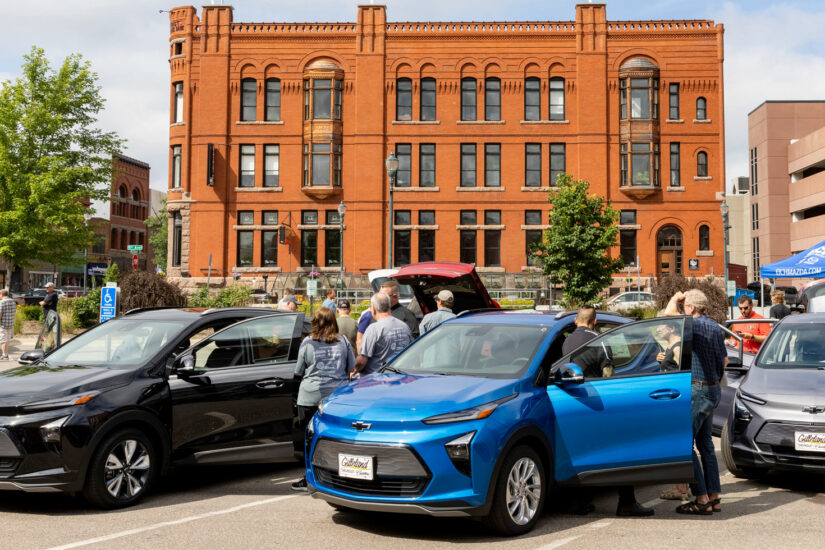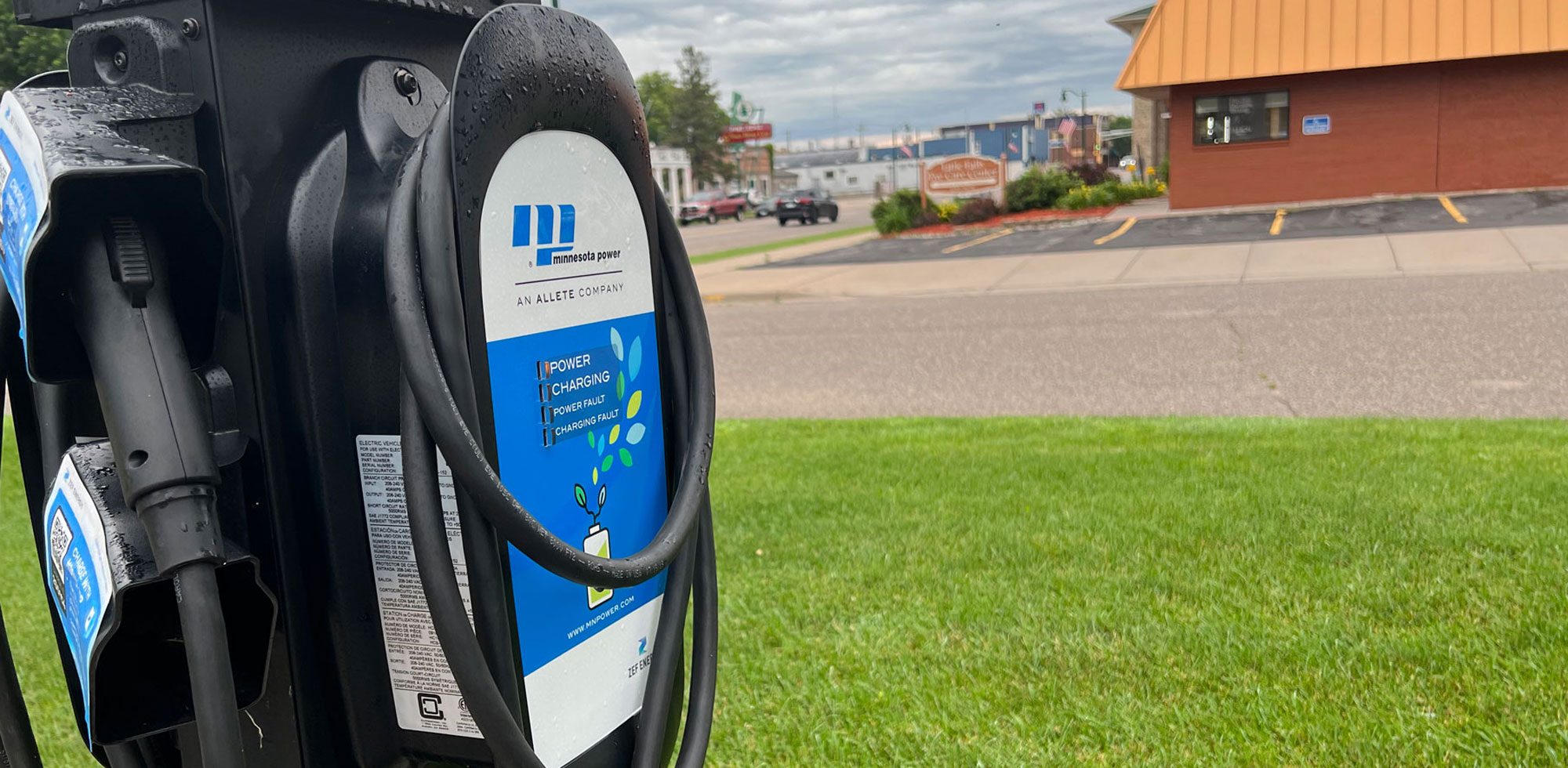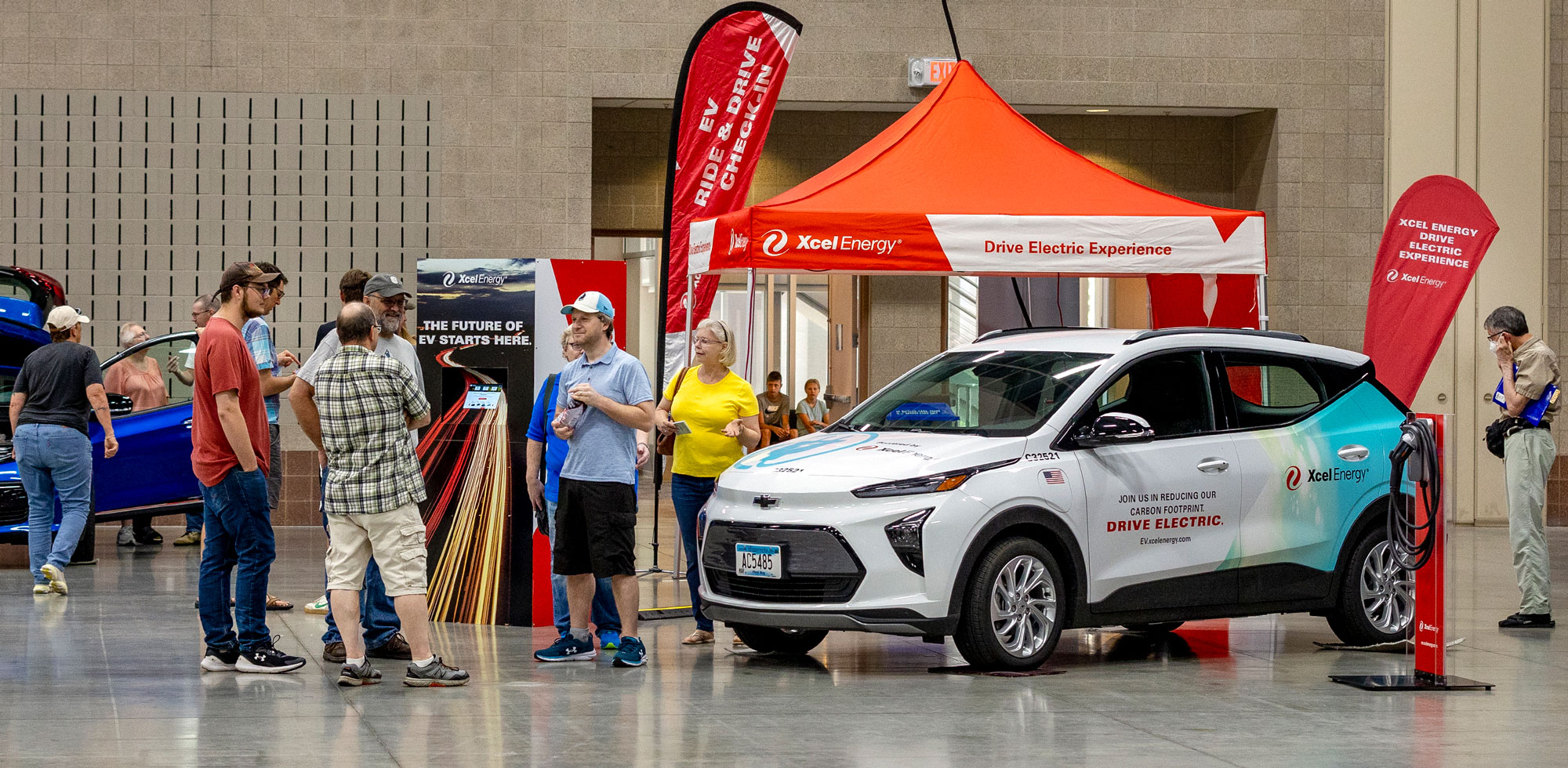
Going Green & Clean
St. Cloud area showcases electric vehicles, clean energy possibilities
By Alicia Chapman | Photography by Paul Middlestaedt
It’s no longer uncommon to see a Tesla or other electric vehicle tooling down the road or pulled up to a charging station. Electric vehicles, also known as EVs, are gaining traction. In fact, car sales in the United States have passed a critical tipping point: 5 percent of all new vehicles sold are powered exclusively by electricity.
As the adoption rate accelerates, it marks a period in which technological preferences rapidly flip, according to an analysis by Bloomberg. The need to prepare the region’s infrastructure to support EVs and other clean-energy options—from the capacity of the electrical grid to the installation of charging stations—is becoming more imminent.
The transition to EVs was on full display in July during a Recharge St. Cloud EV Expo at River’s Edge Convention Center. Supported by an Initiative Foundation grant, in partnership with the Greater St. Cloud Development Corporation, Recharge Minnesota and Xcel Energy, the event was designed to open up conversations around EVs and how they can transform mobility, create efficiencies and spur new economic development possibilities.
“Sector leaders like Xcel and Minnesota Power are rapidly striving to go carbon neutral,” said Don Hickman, Initiative Foundation vice president for community and workforce development. “The goal for both of them is by the end of next decade. They’re deeply committed to encouraging the electrification of as many transportation options as possible.”
As more EVs hit the road, energy companies are working to modernize the power grid to meet the demand, said Tina Malott, program strategist with Recharge America, a national nonprofit that advocates for clean transportation.
“If everybody today went out and bought an EV and started charging, our grids would not be able to handle it,” Malott said. “But that’s not a realistic scenario. This is going to be a steady adoption over the next few years. And along with that adoption will be more renewables on the grid being able to handle that extra load.”
In addition to elevating electric vehicles, the July Recharge event showcased an array of clean energy initiatives occurring in the Greater St. Cloud area. Several years ago the city of St. Cloud took a hard look at its energy consumption and plotted a path toward greater efficiency. The city is now saving about 4.5 million kilowatt-hours a year. Most of the gains have come through innovations at the city’s wastewater treatment plant, which runs on 100 percent renewable energy. An estimated 98 percent of the plant’s energy is generated onsite through solar panels and methane digestion. The city of Sartell is on a similar path to achieve energy efficiencies and carbon-neutral outcomes. (Carbon neutral means that any carbon dioxide being released into the atmosphere is balanced by an equivalent amount being removed.)
The city of St. Cloud also plans to add more electric vehicles to its fleet. Malott said the gradual transition will help to ensure that Minnesota is prepared for the inevitable shift to clean energy technologies.

“To be successful, everybody has to work together,” Malott said. “The manufacturers can’t just say, ‘We’re putting out a line of EVs, get ready.’ The dealer has to install fast charging because you have to give your car to the customer fully charged. So to get that fast charging, the dealer has to work with the local utility. And then, the utilities have to think about their rate structure and incentives. They have to work with the electrical contractors in the area to make sure they’re trained and equipped, and knowledgeable about how to install this infrastructure. There are so many pieces to the puzzle, and right now, everybody’s working their hardest with the same goal in mind – getting more EVs on the road, getting more renewables on the grid.”
Barriers to EV adoption remain, even with awareness-building events like this summer’s Recharge Expo. The cost of EVs remains high for some, but prices are declining as more car companies put EVs into production, Malott said. The next and most significant barrier is public infrastructure. Charger anxiety is a big concern for people considering EVs. More public charging stations are popping up around Central Minnesota, including a two-port charging station in the parking lot of the Initiative Foundation’s Little Falls headquarters. The city of Sartell recently approved 16 charging stations, and the city of St. Cloud has added public charging stations at Riverside Park with plans to add more. In addition, the city of Becker recently installed high-speed electric vehicle charging stations at its high school with funds from an Initiative Foundation grant. The installation will help to meet consumer demand and reposition the Sherburne County city as a diverse and innovative economy as coal-fired power plants are decommissioned in Becker.
“Last year, both the McKnight Foundation and the Morgan Family Foundation were very generous in supporting us for a wider look at how we can advance economic opportunity associated with all clean energy across Central Minnesota,” Hickman said, and regional partners are joining the effort. “Our job as a regional economic organization is helping with retention and expansion of our existing businesses,” said Leslie Dingmann, business development director for the Greater St. Cloud Development Corporation. “So when there are public-private partnerships investing in this infrastructure, it only bodes well for the region as a whole to attract business.”
Elizabeth Kramer, a public service analyst with the city of St. Cloud, said the city takes pride in knowing that it can depend on its own sources of energy for a significant portion of its needs. But it’s more than just being clean. The city is also saving taxpayer dollars.
“In many cases, we’re saving money with these projects,” said Kramer. “And it comes full circle. We’re benefiting local industries by being able to take their high-strength waste. And that, in turn, helps the community and the economy of the area. And it all kind of circles around into itself and provides a lot of benefits for everyone in the city.”
